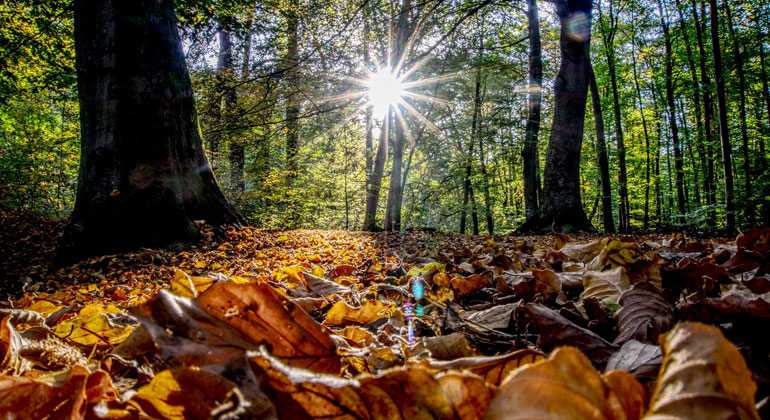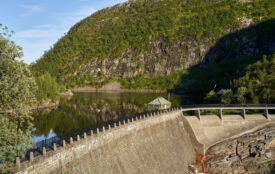More than one in three tree species worldwide faces extinction – IUCN Red List
Thirty-eight per cent of the world’s trees are at risk of extinction according to the first Global Tree Assessment, published in today’s update of the IUCN Red List of Threatened Species™. Also in today’s update, the conservation status of the Western European hedgehog has deteriorated and is now listed as Near Threatened.
The IUCN Red List now includes 166,061 species, of which 46,337 are threatened with extinction.
“Today, we are releasing the global assessment of the world’s trees on the IUCN Red List, which shows that more than one in three tree species are threatened with extinction. Trees are essential to support life on Earth through their vital role in ecosystems, and millions of people depend upon them for their lives and livelihoods. As the IUCN Red List celebrates 60 years of impact, this assessment highlights its importance as a barometer of life, but also, crucially, as a unique tool guiding action to reverse the decline of nature,” said Dr Grethel Aguilar, IUCN Director General.
For the first time, the majority of the world’s trees have been listed on the IUCN Red List, revealing that at least 16,425 of the 47,282 species assessed are at risk of extinction. Trees now account for over one quarter of species on the IUCN Red List, and the number of threatened trees is more than double the number of all threatened birds, mammals, reptiles and amphibians combined. Tree species are at risk of extinction in 192 countries around the world.
“This comprehensive assessment presents the first global picture of the conservation status of trees, which enables us to make better informed conservation decisions and take action to protect trees where it is urgently needed,” said Dr Malin Rivers, Global Tree Assessment lead at Botanic Gardens Conservation International, a Red List Partner. “The work is a global effort, with over 1,000 tree experts involved. We need to continue to work together to scale up local, national and international tree conservation action to support people and the planet.”
The highest proportion of threatened trees is found on islands. Island trees are at particularly high risk due to deforestation for urban development and agriculture at all scales, as well as invasive species, pests and diseases. Climate change is increasingly threatening trees, especially in the tropics, through sea-level rise and stronger, more frequent storms. Addressing the threats that trees face, habitat protection and restoration, as well as ex situ conservation through seed banks and botanic garden collections are critical to prevent extinctions on islands and worldwide. Community action has already led to positive outcomes from the Juan Fernández islands to Cuba, from Madagascar to Fiji.
In South America – home to the greatest diversity of trees in the world – 3,356 out of 13,668 assessed species are at risk of extinction. Innovative approaches are needed to protect the high number of tree species in the region, where forest clearance for crop farming and livestock ranching are the largest threats. In Colombia, Red List assessments have informed national conservation action planning. Seven species of Endangered and Critically Endangered Magnolia have been used for the designation of five new Key Biodiversity Areas, which will be used by local and national government to inform spatial planning.
The IUCN Red List also shows that the loss of trees is a major threat to thousands of other plants, fungi and animals. As a defining component of many ecosystems, trees are fundamental to life on Earth through their role in carbon, water and nutrient cycles, soil formation and climate regulation. People also depend on trees, with over 5,000 of the tree species on the IUCN Red List used for timber in construction, and over 2,000 species for medicines, food and fuels respectively.
Western European hedgehog Near Threatened

The Western European Hedgehog (Erinaceus europaeus) has moved from Least Concern to Near Threatened on the IUCN Red List. The species’ numbers are thought to have shrunk in more than half the countries where it lives, including the UK, Norway, Sweden, Denmark, Belgium, the Netherlands, Germany and Austria. Nationally, numbers have reduced by an estimated 16-33% over the past ten years, with local studies also reporting declines of up to 50% in Bavaria, Germany, and Flanders, Belgium. Increasing human pressures, particularly the degradation of rural habitats by agricultural intensification, roads and urban development, are driving declines of the Western European Hedgehog.
“Regional and national action is essential to support hedgehog populations, through initiatives such as “Hedgehog Street” in the UK and “Danmarks Pindsvin” in Denmark,” said Dr Abi Gazzard, Programme Officer of the IUCN SSC Small Mammal Specialist Group. “The Red List assessment also reveals where there are knowledge gaps, for example, regarding the limits of the species’ distribution. Increased monitoring throughout Europe is essential to learn more about lesser-studied populations.”
Supporting quotes
“The assessment of all tree species has been a massive undertaking that has taken many years to complete and that needs to be celebrated,” said Jean-Christophe Vié, Director General of Fondation Franklinia, which funded most of the Global Tree Assessment. “It is still ongoing, but we now know where to act to efficiently tackle the extinction crisis hitting the world’s trees. There is no excuse not to act. With such a large number of threatened tree species the task is huge, but it has already started. Many NGOs, botanic gardens, universities and others are doing great work, and just the ones that our Foundation supports protect over 1,000 threatened species. Some countries such as Ghana, Colombia, Chile and Kenya already have national strategies in place. Others like Gabon have identified important areas for trees. Trees are seen as an easy fix to climate change and trees are planted everywhere; but the way reforestation is done needs to be greatly improved, diversifying species and including threatened ones in tree-planting schemes. Governments and their forestry departments, companies and all those planting trees could easily do this and get positive impact quickly, tackling both the climate change and biodiversity crises.”
“The significance of the Global Tree Assessment cannot be overstated, given the importance of trees to ecosystems and people. We hope this frightening statistic of one in three trees facing extinction will incentivise urgent action and be used to inform conservation plans,” saidDr Eimear Nic Lughadha, Senior Research Leader in Conservation Assessment and Analysis at the Royal Botanic Gardens, Kew. “Although the proportion of tree species reported as threatened in South America – the world leader in tree diversity – is lower (25%), this percentage is sure to increase, because many tree species from South America have yet to be described for science and tree species new to science are more likely than not to be threatened with extinction.”
“This important analysis of threatened tree species highlights just how critical it is to protect and restore diverse, healthy forest ecosystems. Over two-thirds of globally threatened bird species are dependent on forests. This report must be taken seriously; for the local communities and Indigenous peoples that rely on forests, for the wildlife that depends on trees and for enhancing forest resilience to climate change,” said Cleo Cunningham, Head of Climate and Forests at Birdlife International.
“Trees directly underpin the survival of so many species – including many found on the IUCN Red List. Thriving, naturally diverse forests are essential in mitigating both climate change and biodiversity loss, and as such solutions for one crisis often have mutually reinforcing benefits for the other. This makes the growing number of threatened tree species included on the Red List all the more troubling. Without biodiverse ecosystems that include healthy and diverse tree populations the world will face an even greater climate threat than the one we are already facing. COP16 in Colombia this week represents a great opportunity for the public and private sectors to not just talk about – but to deliver – investments that benefit climate, species and people,” said Dr. Dave Hole, Vice President for Global Solutions at Conservation International’s Moore Center for Science.
“Coordinated by Botanic Gardens Conservation International and the IUCN Species Survival Commission Global Tree Specialist Group, the Global Tree Assessment relied on a global network of over 100 institutional partners and more than 1,000 experts to generate this transformative dataset,” said Dr Jon Paul Rodríguez, Chair of the IUCN Species Survival Commission. “In the 60th anniversary year of the IUCN Red List of Threatened Species, and responding to expectations set in the Biodiversity Plan for Life on Earth, such partnerships that build on and strengthen national technical capacity are the best way to move forward in the assessment of other globally distributed megadiverse groups of animals, fungi and plants.”
“The Red List update underlines the threats faced by thousands of species that form the foundations of crucial ecosystems across the globe. Despite growing pressure to halt worldwide deforestation by 2030, this year, our flagship SPOTT project found that most of the world’s 100 most significant tropical timber and pulp companies have made limited progress in disclosing their zero deforestation and traceability commitments. We must all do more to safeguard these vital forest ecosystems, especially consumer goods manufacturers, financial institutions funding forestry, and agriculture companies,” said Sam Ross, Sustainable Business Project Analyst at ZSL.
“The rapid decline of the Western European hedgehog, now classified as Near Threatened on the IUCN Red List, reflects the state of desperation we face with hedgehog conservation in Europe and the UK. ZSL’s London HogWatch programme studies hedgehog distributions and promotes conservation across the capital. Conservation strategies to mitigate habitat loss, fragmentation, and agricultural intensification will slow their decline, while through creating habitat corridors, reducing pesticide use, and fostering hedgehog-friendly environments we can provide long-term protection for this species,” said Prof. Chris Carbone, Professor in Macroecology and Conservation at ZSL’s Institute of Zoology and Founder of London Hogwatch.








